The Climber’s Guide to Better Camp Life
What we’ve learned about setting up smarter basecamps for real climbing trips.
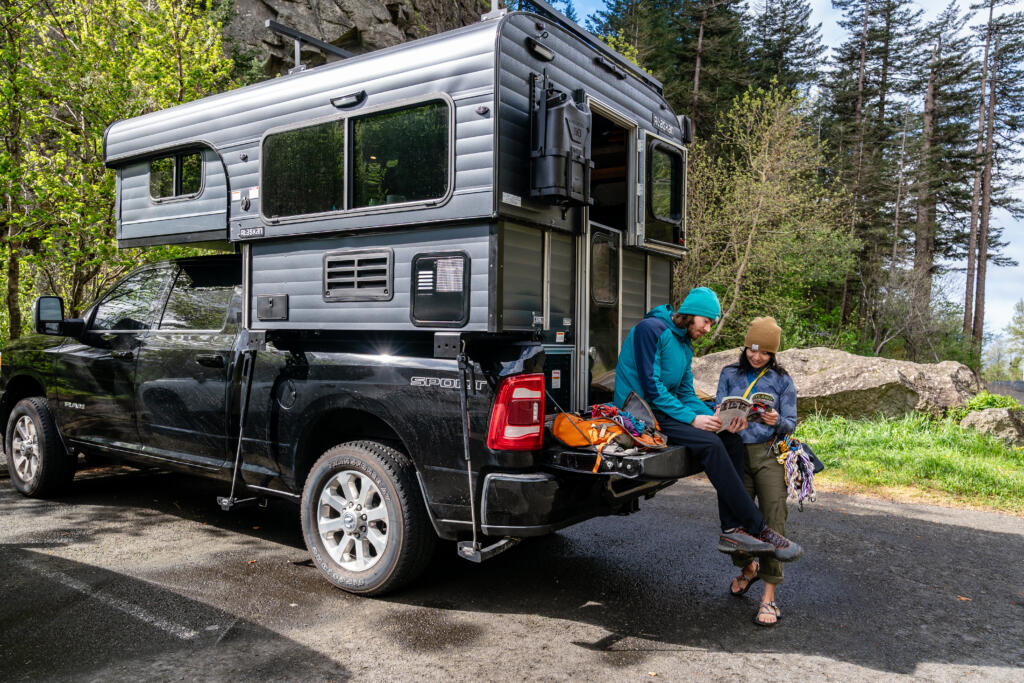
If you’ve been climbing for a while, you already know: the climbing is only half the story. The rest happens at camp—making food, fixing skin, drying gear, and trying to remember what went wrong on that last burn. It’s the unglamorous part that quietly determines how long you stay, how well you recover, and how ready you are when it’s time to tie in again.
We’re here to talk about that part.
We’re probably misusing half the climbing terms in this post. Do we know what we’re doing? Not exactly. But we’ve messed up enough to know this: camp matters.
Because when your setup works—when it’s warm, organized, and easy to live in—you climb better, rest better, and stay out longer. Whether you’re chasing highballs or just trying to keep your Jetboil upright, basecamp makes all the difference.
Here’s what we’ve learned about making camp work for the climbing life.
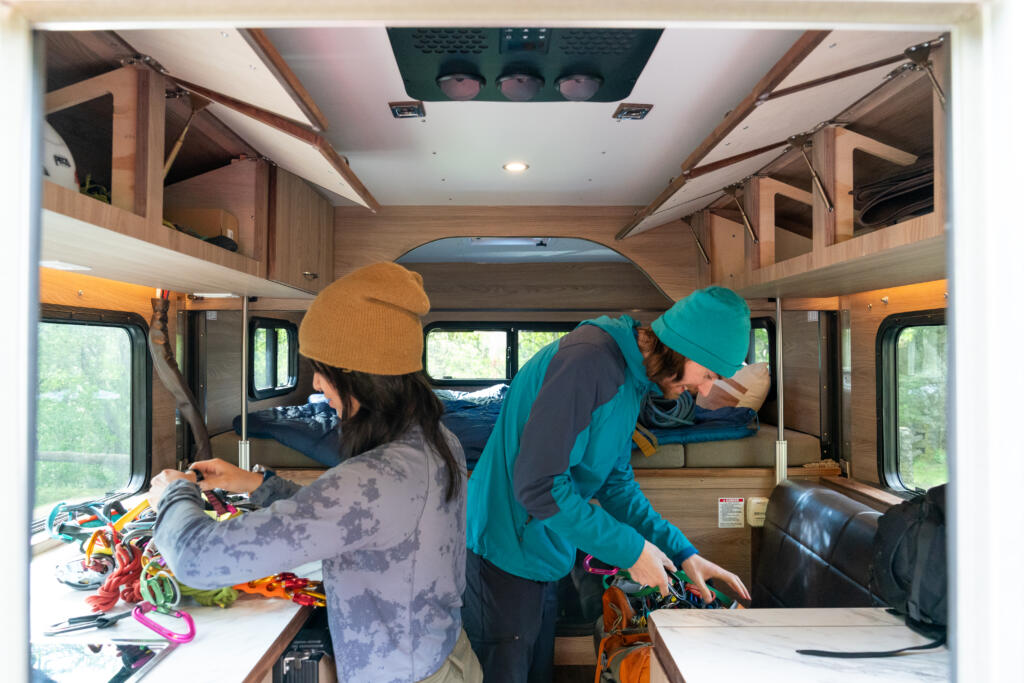
Camp as Strategy
There’s a difference between crashing somewhere and actually having a basecamp. The more you climb, the more that difference starts to matter.
When your setup moves with you—trail-adjacent, coffee already brewing—you spend less time scrambling and more time climbing. You wake up rested, not wrecked. You eat real meals, not whatever’s left at the bottom of the cooler. And instead of tearing down and rebuilding camp every day, you’re already where you need to be.
And after a long day out, recovery starts the minute you’re back at camp. That could mean gear sorted, shoes drying, food cooking—or just sitting in silence while the day catches up with you. Either way, it helps when your rig isn’t just a place to crash, but a place that’s actually ready for you.
What we’ve come to appreciate about a good setup:
- Waking up at the trailhead, not 45 minutes away
- Sleeping well enough to send, not just survive
- A gear layout that doesn’t involve stepping over your harness to cook dinner
- A warm place to reset—so your crash isn’t the end of the day
That’s where a camper like the Alaskan earns its keep. Hard sides for real weather, heat when you need it, and enough space that your crash pad doesn’t double as a dining table. It’s not about luxury—it’s about keeping things simple, functional, and dialed, so you can focus on the climbing, not the chaos.
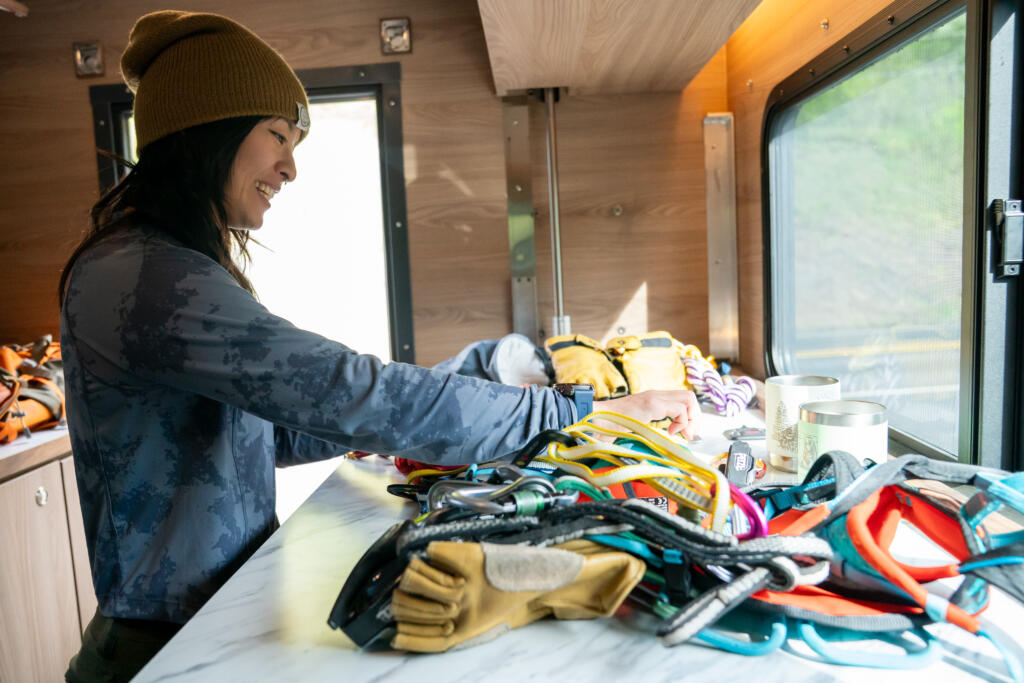
The Approach Is the Destination
When your camp can go wherever the trip takes you, everything changes. The drive, the scenery, the night before a big push—they all start to feel like part of the experience, not just logistics to get through.
Some of the best days start without a plan: winding roads, no signal, a forest pulloff that turns into camp for the night. You chase weather, follow conditions, or just go with the vibe. You camp where it’s quiet, far from trailhead chaos—and when the rain shows up, you’re already on the road to somewhere better.
A good mobile setup means you can:
- Camp away from the crowds—and the chaos
- Follow the weather, or the stoke, or neither
- Stay posted at your project for a week
- Bail guilt-free when it’s time to move on
Mobility isn’t just convenient, it’s freeing. With a rig that’s self-contained and easy to reposition, you’re not stuck managing a campsite. You’re chasing the next climb, the next window, the next project. And you’re doing it on your terms.
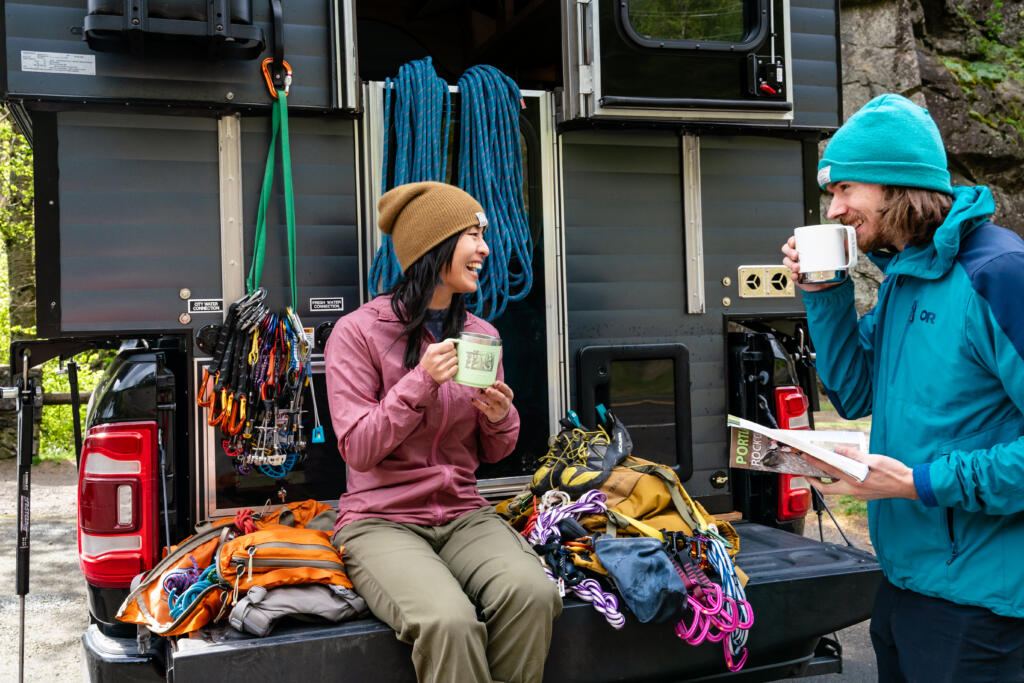
Rest Day Rituals (a.k.a. Not Just Laying There)
Rest days are supposed to help you recover—but let’s be honest, they often just feel like limbo. You’re tired, sore, and your stuff is piling up. If your setup isn’t comfortable, you’re not resting—you’re just waiting.
But when you’ve got space to stretch out, cook something better than bars and broth, and hang without freezing in a camp chair, everything shifts. The day stops feeling like a timeout and starts feeling like a reset. You slow down. You reorganize. Maybe jot down some beta you’ll forget anyway. You nap like a human instead of a pretzel. And before you know it, you’re ready to go again.
Turns out, rest is a lot more restorative when your camper doesn’t feel like a gear closet with a pillow in it.
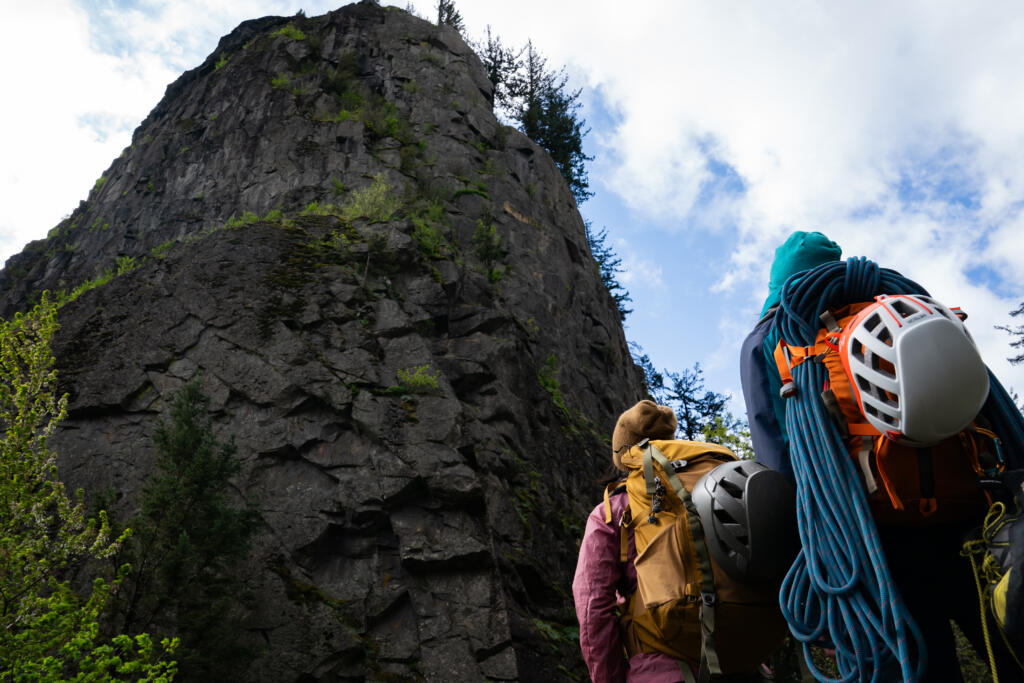
Storage, Systems, Space
No one wants to play camp Tetris after a long climbing day. If your only gear system is “pile everything in and hope for the best,” it’s going to catch up with you. The key isn’t more stuff—it’s better systems. When your food’s easy to find, your ropes have a home, and your shoes don’t stink up your sleeping bag, camp feels like a base, not a mess.
What’s helped us keep things dialed:
- A bin for food that isn’t a melting pile of wrappers
- A place to dry shoes that doesn’t make them worse
- A system for where things go so you’re not hunting headlamps at midnight
- Enough space to move around when the weather turns
The Alaskan’s layout helps with that. Built-in storage. Vertical walls. Room to stand up, sort gear, and live like you planned to be there. It’s not flashy—it just works.
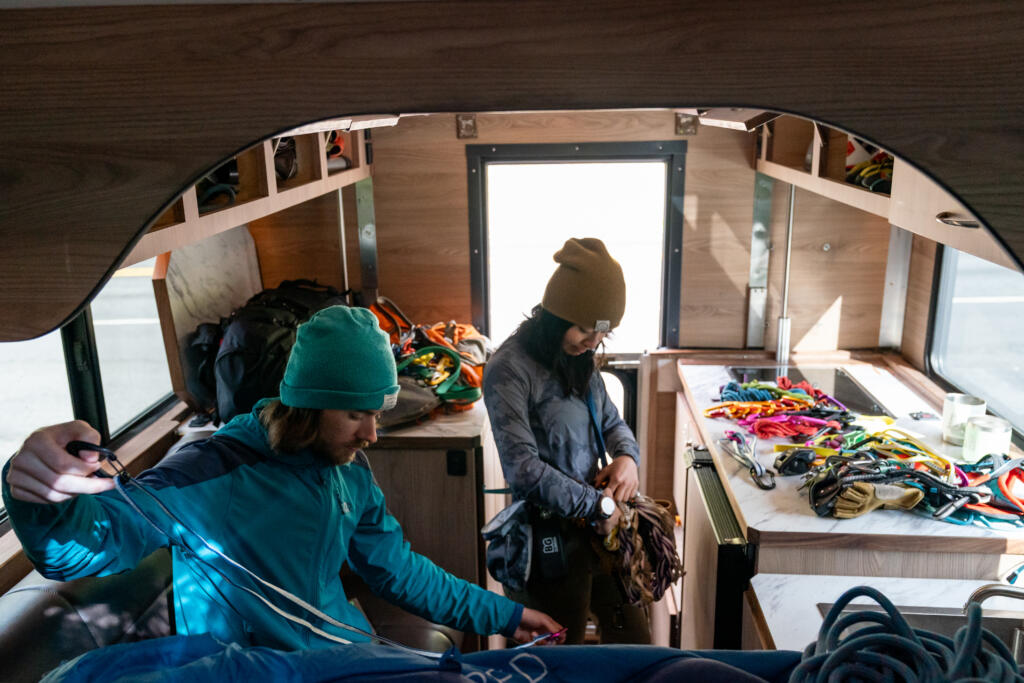
Conclusion: Still Figuring It Out (But Getting Better at BASECamp)
We said it up top—do we fully know what we’re doing? Not really. But after enough blown forecasts, gear explosions, and questionable dinner decisions, one thing’s clear: how you camp shapes how you climb.
A good setup doesn’t make you stronger, but it keeps you out there. It buys you better sleep, smoother mornings, and enough headspace to go again when the day before didn’t go your way.
So whether you’re gearing up for your first trip or tweaking a system that mostly works, camp’s worth getting right. Because climbing might be the reason you go—but camp is what makes the rest of it possible.
We’re still learning. But now the gear’s dry, the coffee’s hot, and we’re not sleeping on a rope bag. That’s progress.
